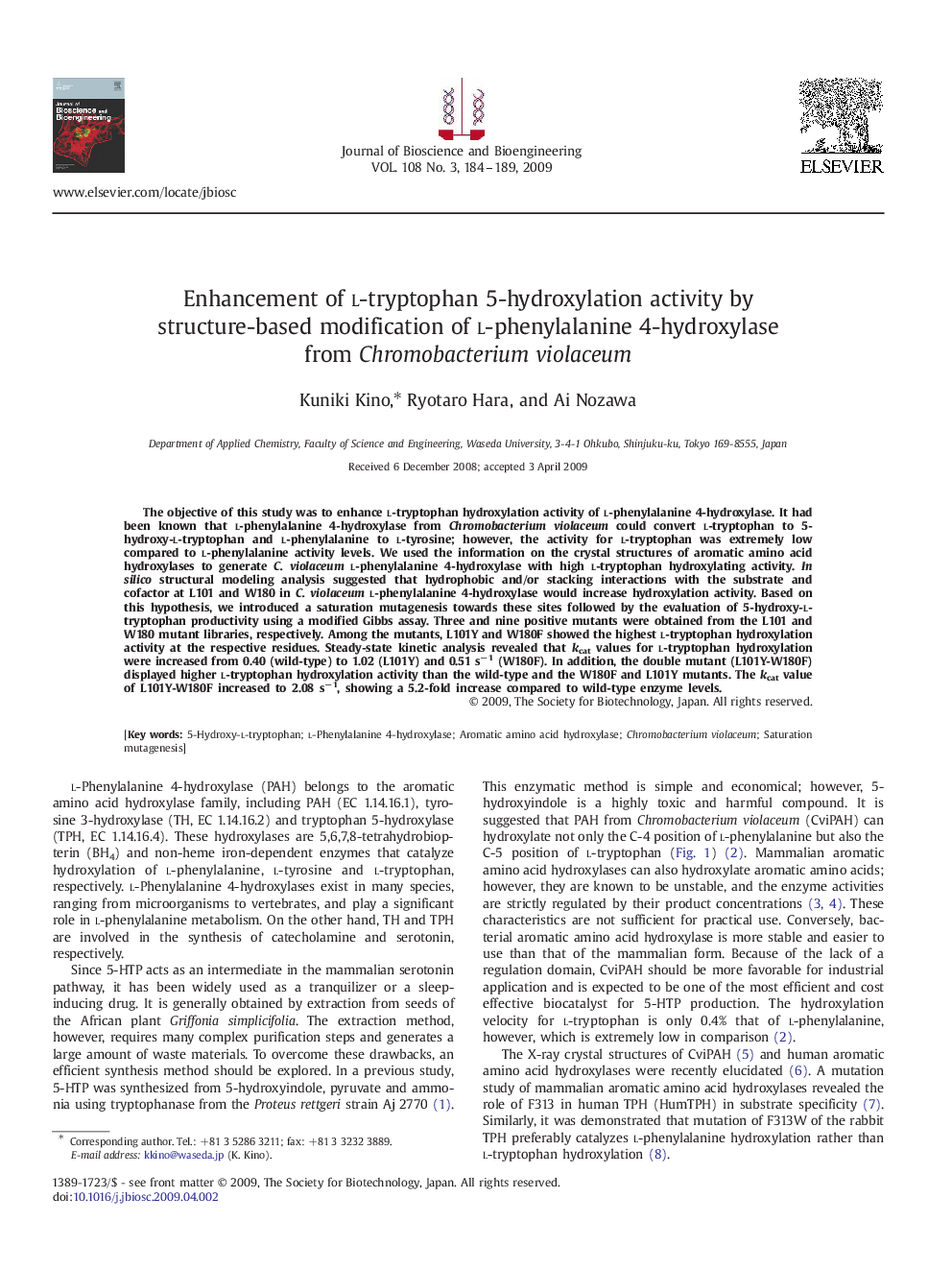| Article ID | Journal | Published Year | Pages | File Type |
|---|---|---|---|---|
| 21982 | Journal of Bioscience and Bioengineering | 2009 | 6 Pages |
The objective of this study was to enhance l-tryptophan hydroxylation activity of l-phenylalanine 4-hydroxylase. It had been known that l-phenylalanine 4-hydroxylase from Chromobacterium violaceum could convert l-tryptophan to 5-hydroxy-l-tryptophan and l-phenylalanine to l-tyrosine; however, the activity for l-tryptophan was extremely low compared to l-phenylalanine activity levels. We used the information on the crystal structures of aromatic amino acid hydroxylases to generate C. violaceuml-phenylalanine 4-hydroxylase with high l-tryptophan hydroxylating activity. In silico structural modeling analysis suggested that hydrophobic and/or stacking interactions with the substrate and cofactor at L101 and W180 in C. violaceuml-phenylalanine 4-hydroxylase would increase hydroxylation activity. Based on this hypothesis, we introduced a saturation mutagenesis towards these sites followed by the evaluation of 5-hydroxy-l-tryptophan productivity using a modified Gibbs assay. Three and nine positive mutants were obtained from the L101 and W180 mutant libraries, respectively. Among the mutants, L101Y and W180F showed the highest l-tryptophan hydroxylation activity at the respective residues. Steady-state kinetic analysis revealed that kcat values for l-tryptophan hydroxylation were increased from 0.40 (wild-type) to 1.02 (L101Y) and 0.51 s− 1 (W180F). In addition, the double mutant (L101Y-W180F) displayed higher l-tryptophan hydroxylation activity than the wild-type and the W180F and L101Y mutants. The kcat value of L101Y-W180F increased to 2.08 s− 1, showing a 5.2-fold increase compared to wild-type enzyme levels.
